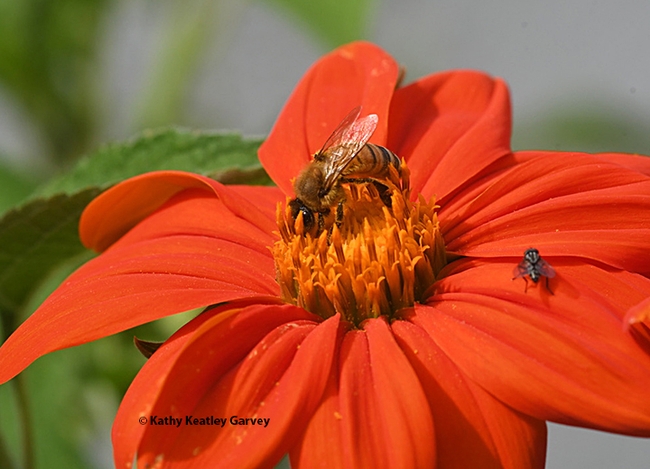- Author: Kathy Keatley Garvey
An Anise Swallowtail, Papilio zelicaon, settles on a red zinnia in a Vacaville pollinator garden and begins sipping the nectar.
A honey bee buzzes by.
Was she just passing through or did she want the same nectar?
The bee brushes the butterfly's wings. Okay! I'm leaving!
Score: Bee, 1; butterfly 0.
Anise Swallowtails, according to UC Davis emeritus professor Art Shapiro, "have several generations (late February or March-October) and breed very largely on Sweet Fennel (Anise), Foeniculum vulgare, and (in the first half of the season) Poison Hemlock, Conium maculatum. Both of these are naturalized European weeds."
Shapiro, who retired this summer from the Department of Evolution and Ecology, has been monitoring the butterfly populations of Central California since 1972. He maintains a research site, Art's Butterfly World.
The images below were captured with a Nikon D500 camera and a 200mm macro lens. Shutter speed: 1/2000 of a second, f-stop, 4; and ISO, 800.
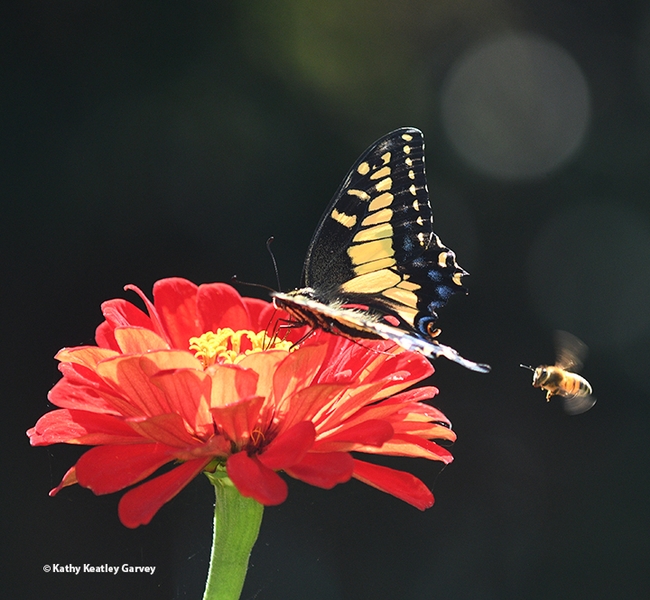
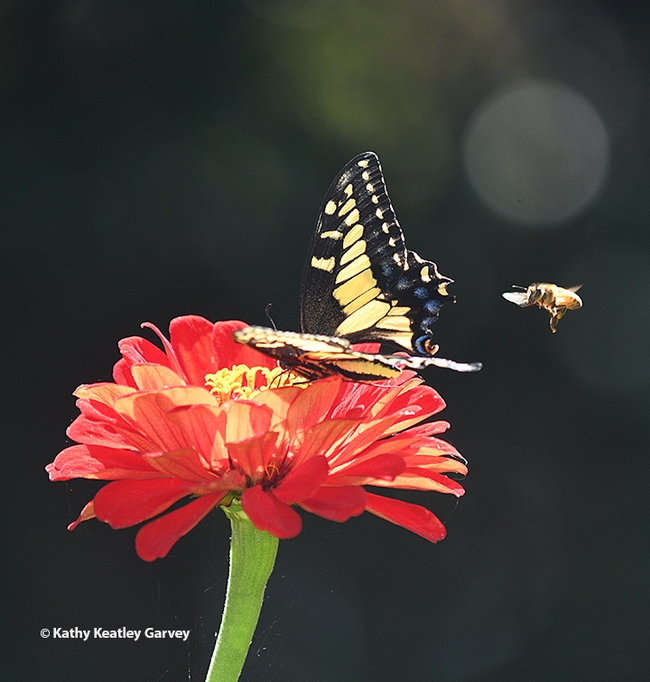
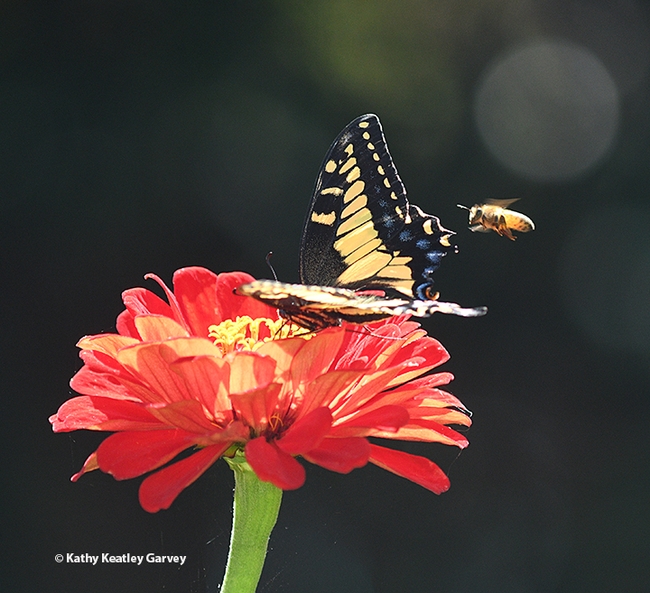
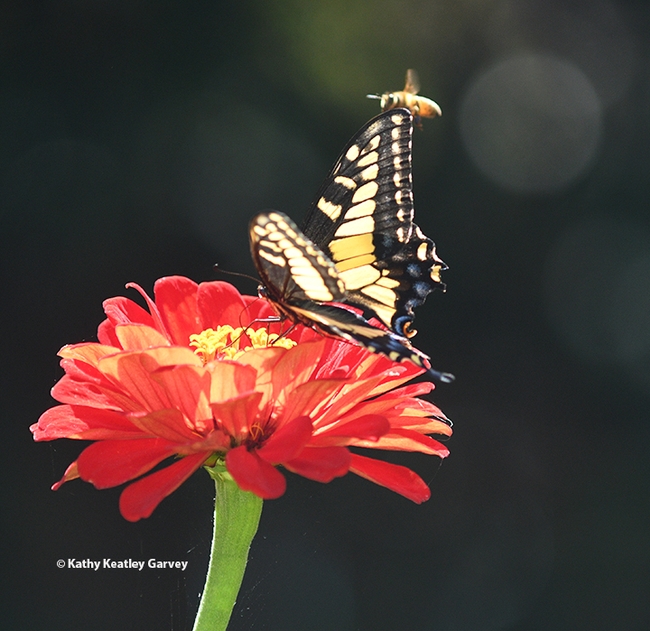
- Author: Kathy Keatley Garvey
It's Labor Day but "The Girls" continue to work.
"The Girls" are the honey bees, a great example of a matriarchal society. How many workers (girls) do you see foraging on your flowers? But inside the hive, "The Girls" are nurse maids, nannies, royal attendants, builders, architects, dancers, honey tenders, pollen packers, propolis or "glue" specialists, air conditioning and heating technicians, guards, and undertakers. And the males? Their responsibility is to mate with a virgin queen--and then they die.
In his newly published book, Honey Bee Biology (2023 Princeton University), UC Davis bee scientist Brian Johnson of the Department of Entomology and Nematology, covers everything from molecular genetics, development, and physiology to neurobiology, behavior, and pollination biology. It's meant for bee scientists, social insect biologists, beekeepers, and those who are just eager to learn more about honey bees.
Honey bees "evolved from the hunting wasp, a group of four clades of wasps that typically provision their offspring with insects or spiders," Johnson writes in his opening chapter, 'Natural History, Systematics and Phylogenetics.' Probably the most well known of the hunting wasps (to the nonentomologist) are the mud daubers that build their nests on the sides of people's homes."
"The split between these wasps and what evolved into the bees occurred about 120 million years ago," Johnson writes.
Basically, wasps continue to be meat-eaters, but honey bees "have gone vegetarian," as Johnson points out.
When you see honey bees foraging on flowers, gathering nectar and pollen, just remember that they are vegetarians. And especially, on Labor Day, remember how "The Girls" tend to the needs of the queen, their sisters and their brothers.
As a society, we could learn a lot from honey bees.

- Author: Kathy Keatley Garvey
Ever seen a honey bee packing red pollen?
Rock purslane (Calandrinia grandiflora) is one flower that yields red pollen.
It's a drought-tolerant perennial, a succulent. But the most striking part is its color: a neon pink that could stop traffic.
Other flowers that yield red pollen include henbit (Lamium amplexicaule) and horse chestnut (Aesulus hippocastanum).
Bees collect pollen as a protein source to rear their brood. If you're a beekeeper, you've probably seen the red pollen in your frames and asked "Where did that red come from?"
Some of it may have come from a nearby rock purslane.
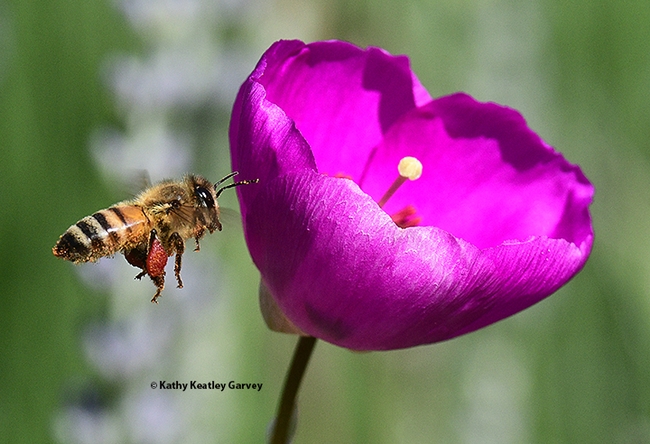
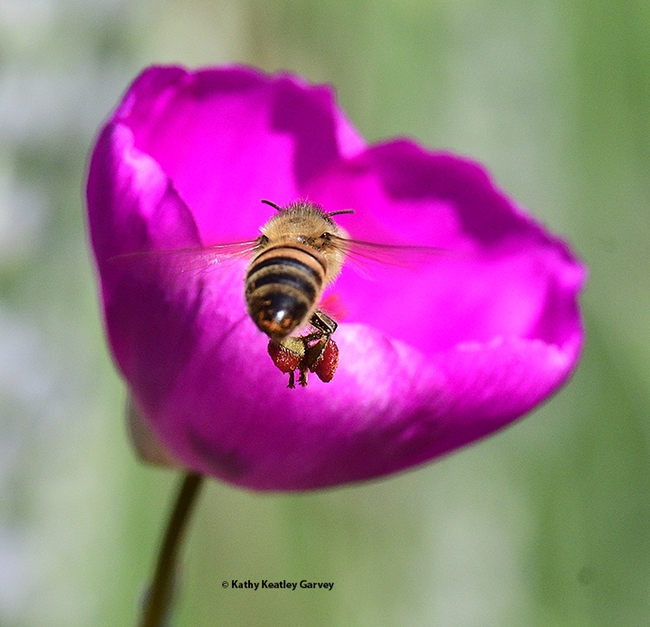
- Author: Kathy Keatley Garvey
A honey bee heads for a patch of California golden poppies. She finds a blossom she likes.
Bee: "Hey, Goldie Locks, I'm here to collect some nectar and pollen."
Goldie Locks: "You're what?"
Bee: "I want to collect some of your nectar and pollen."
Goldie Locks: "Don't you know that we California golden poppies don't have nectar--just pollen?"
Bee: "Oh? Really? I did not know that. Oh, well, pollen, then!"
Goldie Locks: "Sorry, bee. You're late. Don't you know that I close in the late afternoon?"
Bee: "Closed? What am I supposed to do?"
Goldie Locks: "Do? Come back tomorrow when I'm open for bees-ness."
Bee: Shakes her head, stomps her feet, and buzzes away.
Moral of the story: The early birds get the worm and the early bees get the pollen. And California golden poppies provide no nectar, just pollen.
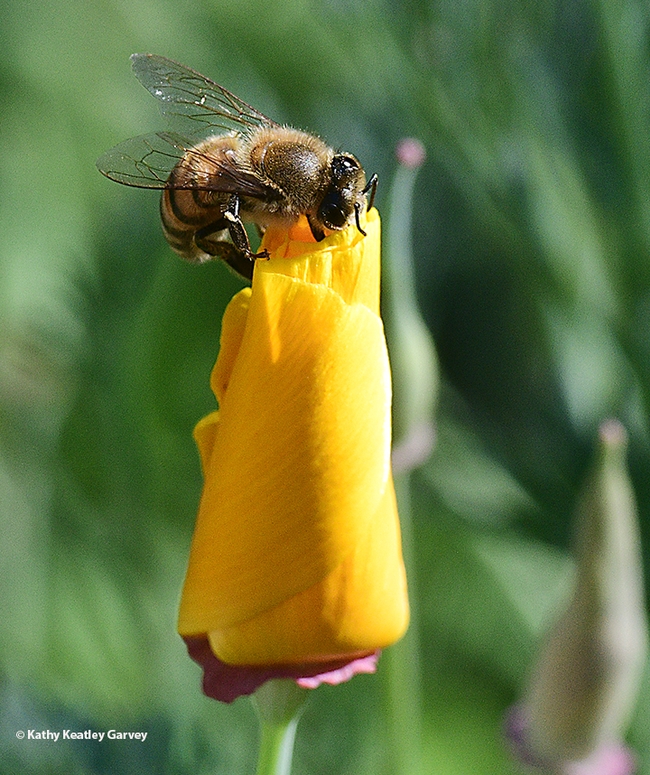
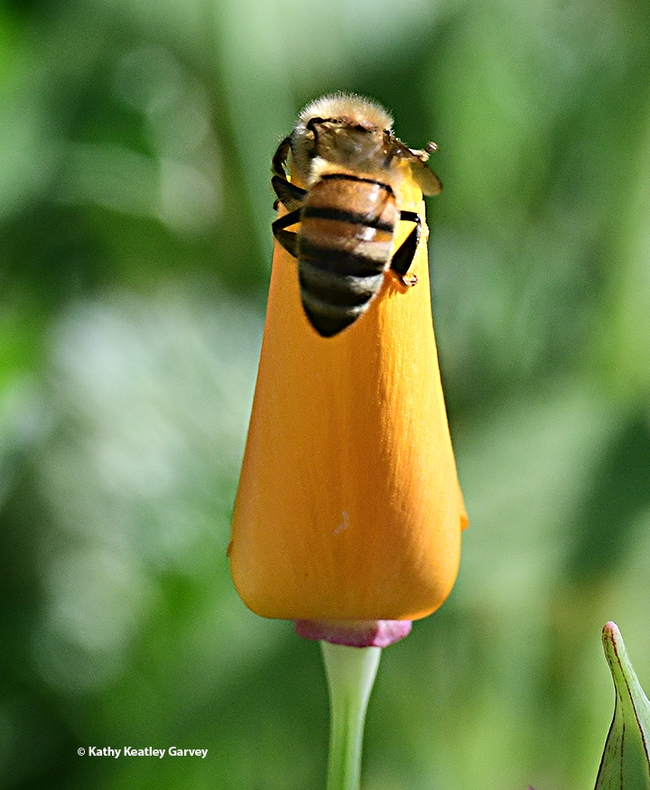
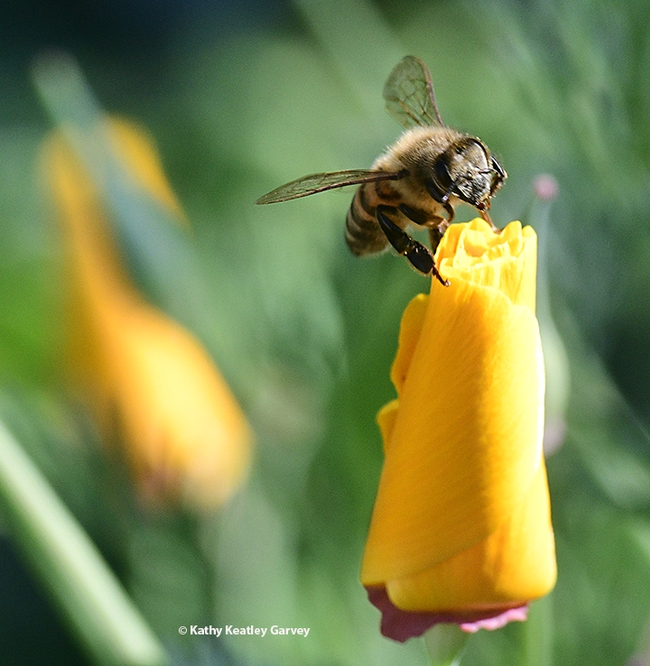
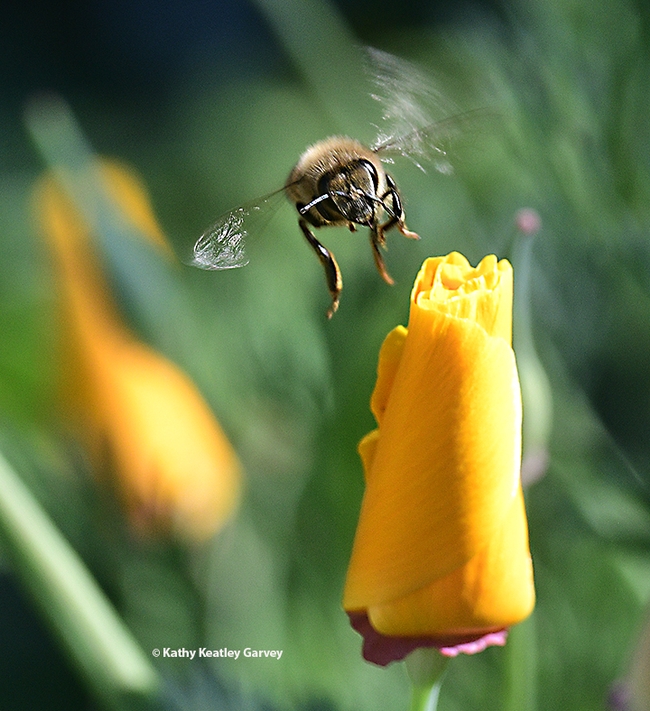
- Author: Kathy Keatley Garvey
It's "Friday Fly Day," but no flies today.
They're in a "no-fly zone."
That's because of the freezing temperatures. Jack Frost is nipping at assorted noses, leaves are dropping like flies, and cups are overflowing with hot chocolate.
Meanwhile, here's an image BEFORE the freeze. A honey bee is nectaring on a Mexican sunflower, Tithonia rotunidfola, while a fly seeks a share.
The honey bee? Apis mellifera. The fly? "Sarcophagid flesh fly and the genus I do know but it is probably a Miltogramminae, a satellite fly," said forensic entomologist Robert "Bob" Kimsey of the UC Davis Department of Entomology and Nematology. "They are mostly parasites."
Happy No-Fly Day!
